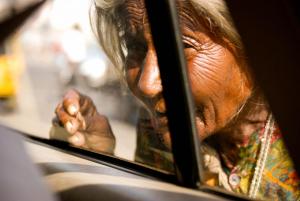The preliminary results of the Socio-Economic Caste Census (SECC) are out.
First the bare but not dry—unless the sweat, tears and blood of poor don’t move you—facts:
- Three in four rural households don’t earn more than 5,000 a month
- More than nine out of 10 rural households have no earnings over Rs 10,000 a month.
- 56 percent of rural households own no land
- Only 3% rural households have even a single member with a graduate or postgraduate degree.
- A quarter households have no literate adult above 25 years
Before we consider its consequences and hope you reflect on this misery, a word about the SECC.
The SECC is a commendable yet far from complete work. It asked its officials to ask members of all households in the country a few primary questions: (i) what they owned; (ii) how they earned a living; (iii) how much they earned; (iv) how far they had studied.
This census could hardly be termed complete. Invisible populations, such as foreset-dwellers; nomads; footloose migrants, bonded workers, people treated as pockmarks due to their sexuality and ailments must have been ignored—large official surveys usually suffer from this defect. It is thus only fair to say that SECC estimate on poverty and deprivation is far less than is the reality.
Now a reflection on facts:
- With no land, this distressed population turns to manual labour. Since 1951, the number of cultivators in this country has fallen. Independent peasants have largely turned into agricultural labour. They have few rights, little income. They work in rice, wheat, sugarcane and cotton forms of Punjab, Haryana, Uttar Pradesh and Maharashtra and elsewhere.
- With little education, India’s “Growth Story” could never be inclusive. Without reading or writing, they have minimal or no skills. All they end up doing is to add to millions of migrants and distressed army of labours. Working as construction workers in high-rise structures in cities; semi-bonded workers in brick kilns; workers in building roads in conflict-prone states.
- These migrants run towards bigger cities, metropolises for whatever they could earn and send back home. They migrate to distant lands, with families, disrupting kids’ schooling, finding shelter under torn tarpaulins and leaving behind old people in the village to starve, cry, beg and die.
The government’s response to these findings is typical. They promise to fast-forward economic growth. But the model is defective. They would clear up forests and leave people far from resettled; squeeze on public spending on education, health and agriculture; damage further labour and land acquisition laws. Instead, they should be more sympathetic to MGNREGA for in essence it offers definite waged work closer to their homes.
The government must pay heed to epidemic of farmers’ suicides and worry about large-scale migrations to hostile lands which is neither good for cities nor villages. Rural infrastructure must improve; improved education, health, land laws must take place.
India does not shine for its teeming villages. That’s the truth. But are you there?


